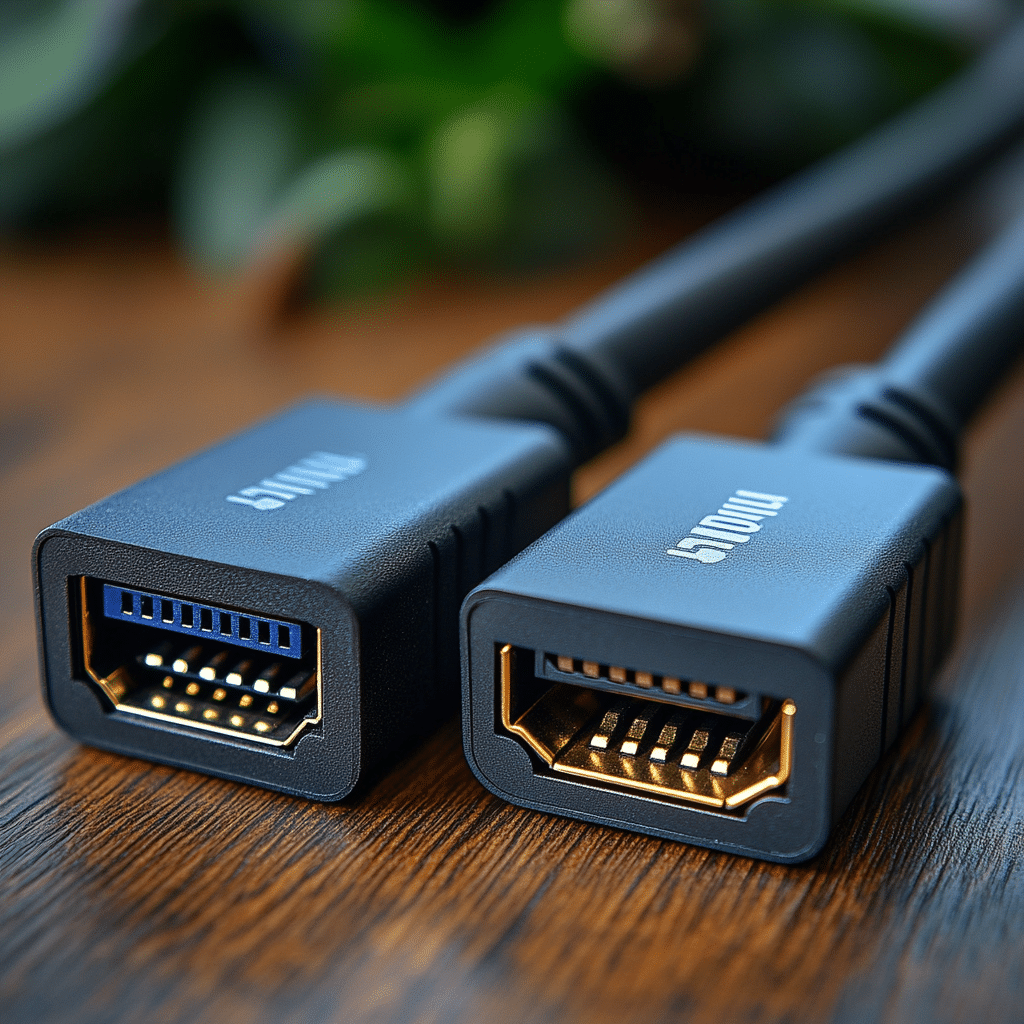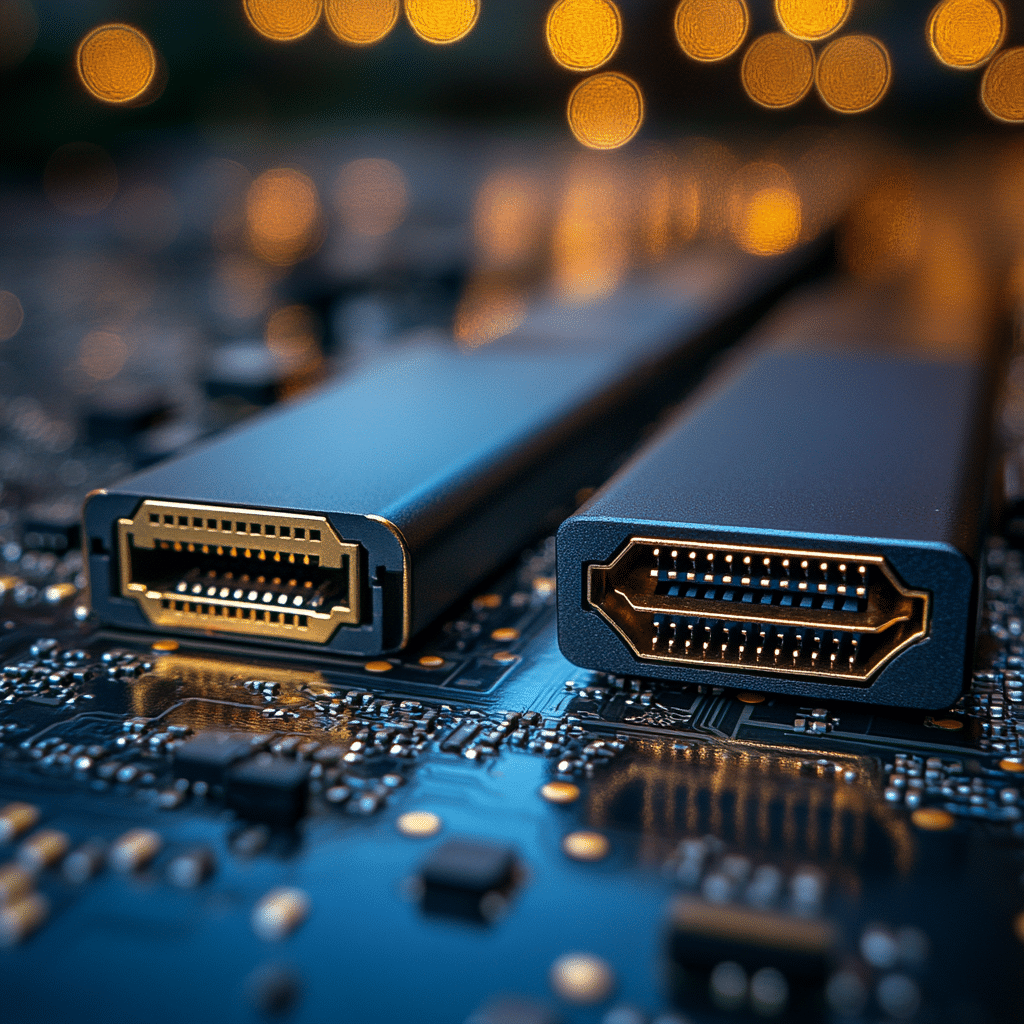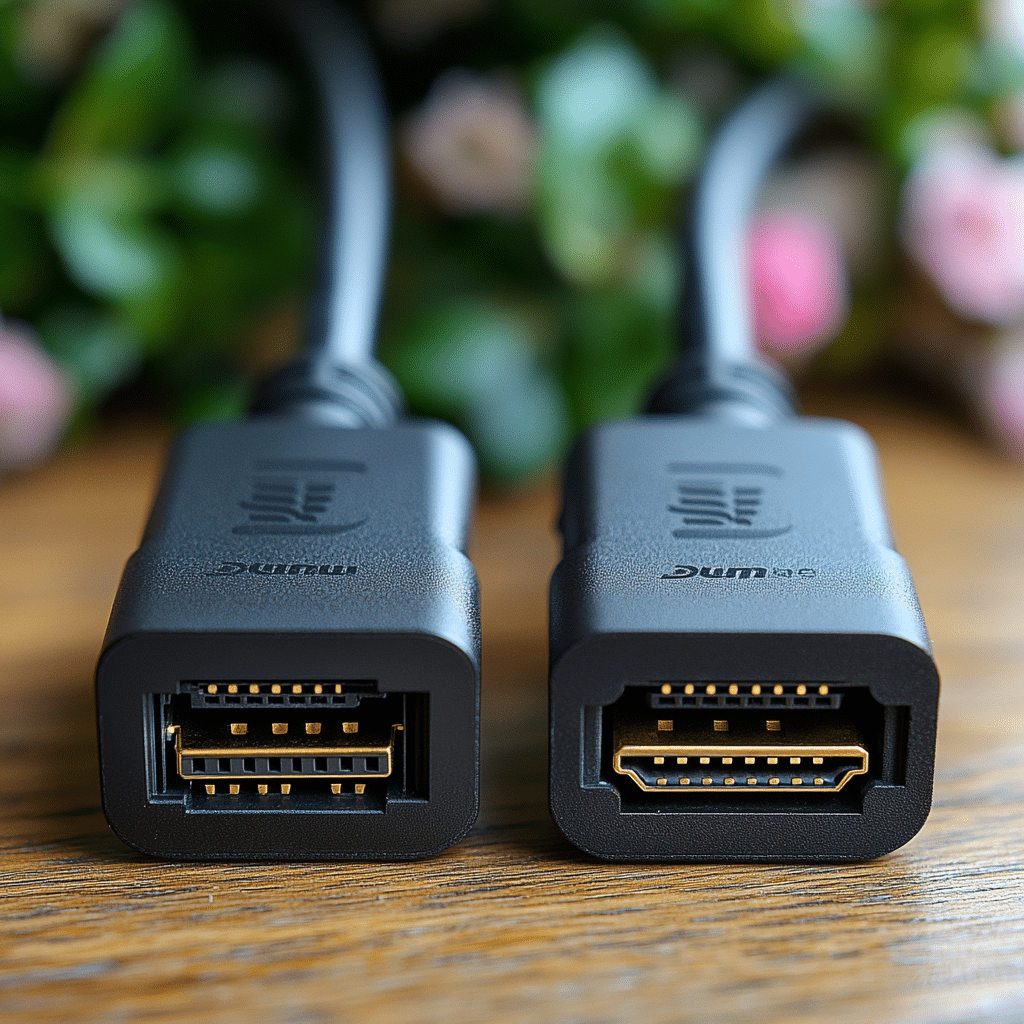In today’s tech-savvy world, the showdown between DisplayPort vs HDMI is more than a simple tech debate among enthusiasts. It’s a battle that can make or break your viewing and gaming experience. Whether you’re streaming the latest blockbuster or grinding on a high-refresh-rate game, the choice of connection matters. Let’s dissect these two heavyweights, exploring what makes them tick and determining which one deserves a spot in your tech arsenal.
1. Key Differences Between DisplayPort and HDMI: A Quick Overview
When diving into DisplayPort vs HDMI, it’s crucial to understand their key distinctions. Both technologies have their strengths, so picking one over the other really depends on what you’re after.

2. Use Cases: DisplayPort vs HDMI in Real-World Scenarios
Now let’s stop the technical jargon and get down to some real-world relevance. Choosing the right port can influence your daily tech experiences significantly.
a. Gaming Setup: DisplayPort Dominance
Gamers—this is your arena, and DisplayPort is the gladiator you want standing beside you. For those rocking monitors like the ASUS ROG Swift PG259QN, with an astonishing 360Hz refresh rate, it’s hard to argue against the smoothness that DisplayPort delivers. You want that competitive edge? The adaptive sync capabilities ensure you’re living your best gaming life.
b. Home Theater Systems: The HDMI Advantage
When it comes to home theaters, HDMI takes the cake. Picture this: you’ve got a Sonos Arc soundbar that you absolutely love. Thanks to HDMI eARC (Enhanced Audio Return Channel), your audio setup syncs seamlessly, so you can enjoy every explosion and whisper in pinpoint clarity. If you’re trying to connect a DisplayPort device to your HDMI-only TV, you might need a Display Port to HDMI adapter—but don’t worry, you’ll be right back on track soon enough.
c. Professional Workstations: Dual Monitor Setup
For creative types—think graphic designers or video editors—DisplayPort is your best friend. Is your setup filled with monitors like the Dell UltraSharp U2720Q? You’ll benefit tremendously from the daisy chaining feature available with DisplayPort. You can connect multiple displays using a single output, making your workspace feel like a high-tech command center, rather than cluttered chaos.
3. Adapters and Compatibility: Navigating the DisplayPort to HDMI Pathway
Alright, let’s keep the party going with a few practical notes about compatibility and how to bridge the divide between these two standards.

4. Upcoming Trends: The Future of DisplayPort and HDMI
As we edge closer to 2024, expect the tech landscape to shift dramatically. Here’s a taste of what’s coming:
Innovative Takeaway
Ultimately, choosing between DisplayPort vs HDMI boils down to your specific needs and how you plan to use these connections. Gamers will likely lean towards DisplayPort for its superior refresh rates and adaptive features, while home theater lovers will find HDMI’s audio capabilities endlessly appealing. And let’s not forget that multi-function adapters can help mesh these two worlds nicely. As technology keeps trudging forward, you’ll want to remain informed about your choices, ensuring you get the most bang for your buck. Whether you’re setting up a sleek workspace or the ultimate gaming rig, knowledge is power, and in this case, clarity is king. Don’t leave it to chance—make the smart choice and elevate your tech game today!
DisplayPort vs HDMI: Fun Trivia and Interesting Facts
The Basics of DisplayPort and HDMI
Did you know that both DisplayPort and HDMI have roots in the same technology family? They both utilize the same digital signal to transmit high-definition audio and video. However, DisplayPort is often regarded as the favorite for gamers and content creators due to its capabilities at higher resolutions and refresh rates. Fun fact: DisplayPort can daisy-chain multiple monitors together, letting you create an expansive workspace, much like those luxurious pool lounge Chairs inviting you to relax in comfort.
The Evolution of Standards
If you’re pondering whether to lean towards HDMI or DisplayPort, it’s also interesting to note that HDMI has been around since 2003. This technology emerged as a go-to for TVs and home entertainment systems, while DisplayPort debuted in 2006, targeting the computer industry. Want something fun to say at your next gathering? You can impress your friends by sharing that the HDMI standard supports features like Ethernet data connection, which many don’t consider. Further, the refresh of HDMI standards over the years mirrors the ongoing changes in automotive technology; think of how the Toyota certified Pre-owned program gives buyers peace of mind in their automotive journey.
Compatibility and Usage
Now, don’t forget about versatility! While HDMI often supports older devices with ease, DisplayPort provides more flexibility across various setups. This is especially true in professional environments like gaming tournaments or graphic design studios. Speaking of impressive skills, you might enjoy deep-diving into something completely different, like the melodic strums of the D minor chord; it shares the same harmony that connects different forms of creativity.
For those who love to customize their setups, knowing the differences in capability can help you make the best choice. If you’re ever curious about the spiritual significance of holidays while multitasking on your tech, consider the St. Patrick ’ s Day spiritual meaning; it’s a delightful way to explore cultural expressions like you would when exploring the nuances of DisplayPort vs HDMI. In the grand scheme of things, whether you prefer watching your favorite shows or jamming to your favorite Cody Jinks Hits, the right connection will help you enjoy it all seamlessly!











